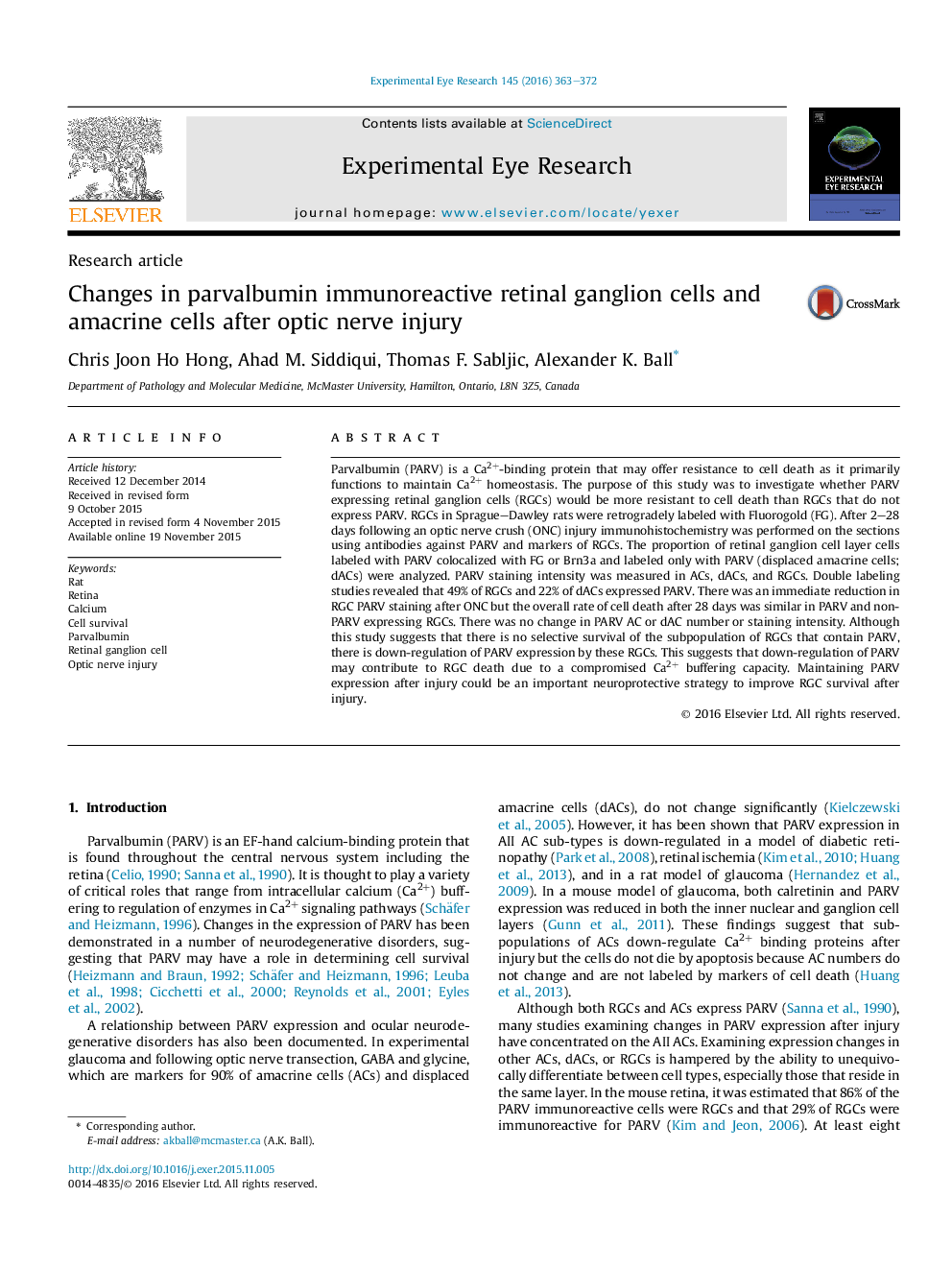| کد مقاله | کد نشریه | سال انتشار | مقاله انگلیسی | نسخه تمام متن |
|---|---|---|---|---|
| 6196499 | 1602577 | 2016 | 10 صفحه PDF | دانلود رایگان |
- Subsets of retinal ganglion cells (RGC) and amacrine cells express Parvalbumin (PARV).
- Optic nerve crush injury results in RGC PARV downregulation and subsequent cell death.
- RGCs that express PARV and those that do not are equally susceptible to cell death.
- Amacrine cells maintain PARV expression and survive after optic nerve crush injury.
- PARV downregulation may contribute to RGC death after the optic nerve is crushed.
Parvalbumin (PARV) is a Ca2+-binding protein that may offer resistance to cell death as it primarily functions to maintain Ca2+ homeostasis. The purpose of this study was to investigate whether PARV expressing retinal ganglion cells (RGCs) would be more resistant to cell death than RGCs that do not express PARV. RGCs in Sprague-Dawley rats were retrogradely labeled with Fluorogold (FG). After 2-28 days following an optic nerve crush (ONC) injury immunohistochemistry was performed on the sections using antibodies against PARV and markers of RGCs. The proportion of retinal ganglion cell layer cells labeled with PARV colocalized with FG or Brn3a and labeled only with PARV (displaced amacrine cells; dACs) were analyzed. PARV staining intensity was measured in ACs, dACs, and RGCs. Double labeling studies revealed that 49% of RGCs and 22% of dACs expressed PARV. There was an immediate reduction in RGC PARV staining after ONC but the overall rate of cell death after 28 days was similar in PARV and non-PARV expressing RGCs. There was no change in PARV AC or dAC number or staining intensity. Although this study suggests that there is no selective survival of the subpopulation of RGCs that contain PARV, there is down-regulation of PARV expression by these RGCs. This suggests that down-regulation of PARV may contribute to RGC death due to a compromised Ca2+ buffering capacity. Maintaining PARV expression after injury could be an important neuroprotective strategy to improve RGC survival after injury.
361
Journal: Experimental Eye Research - Volume 145, April 2016, Pages 363-372
